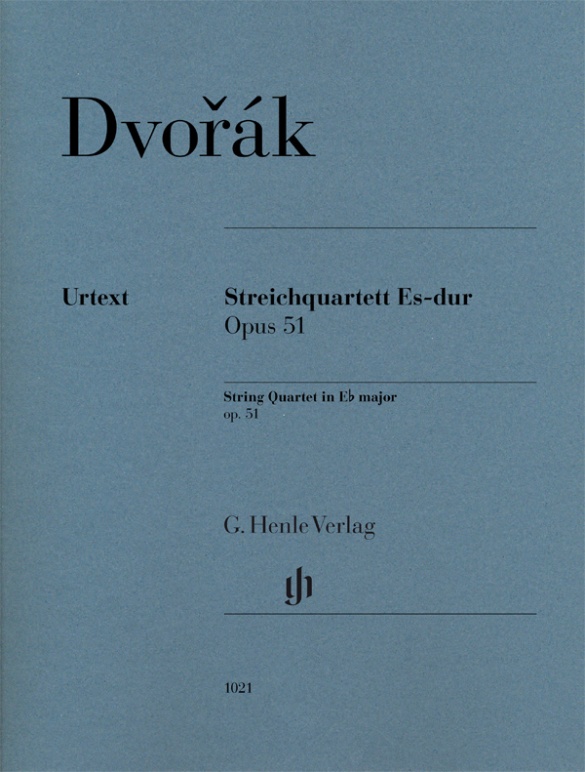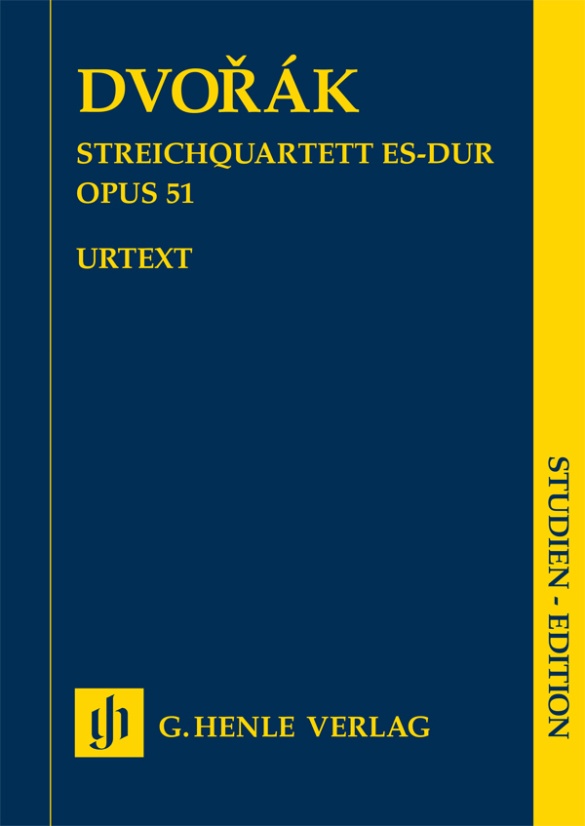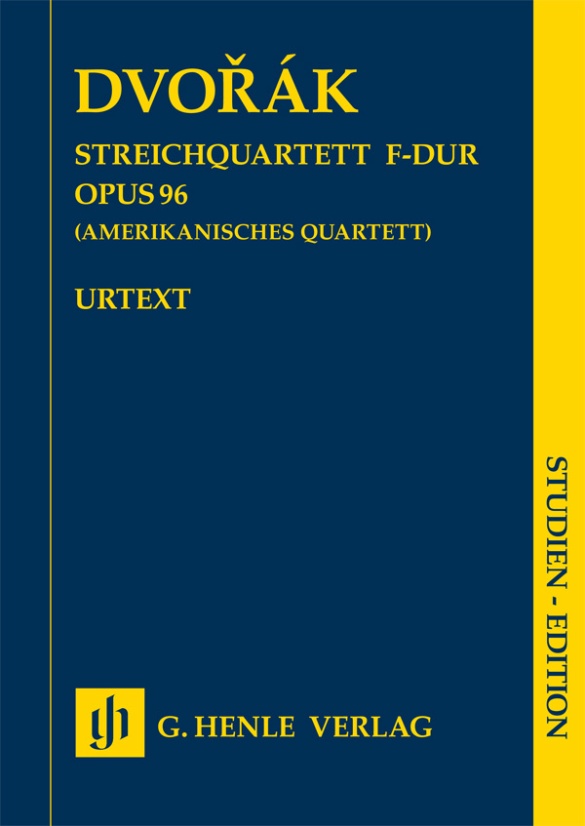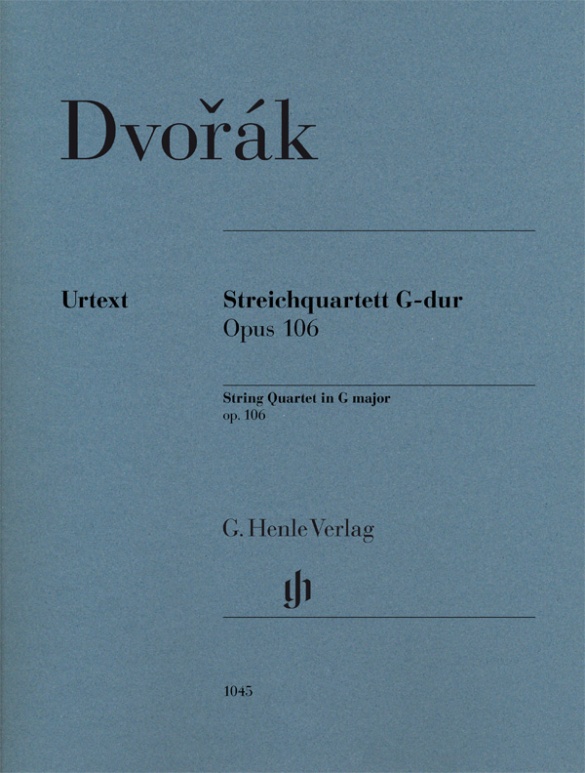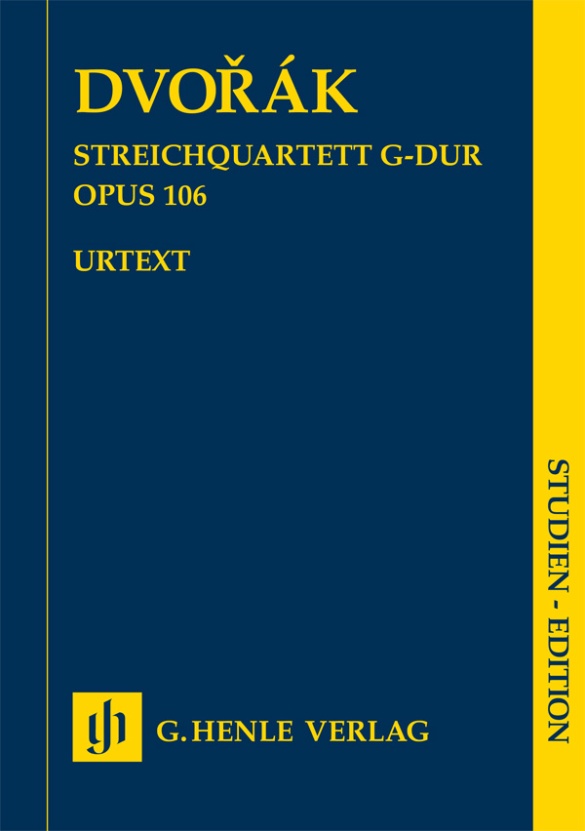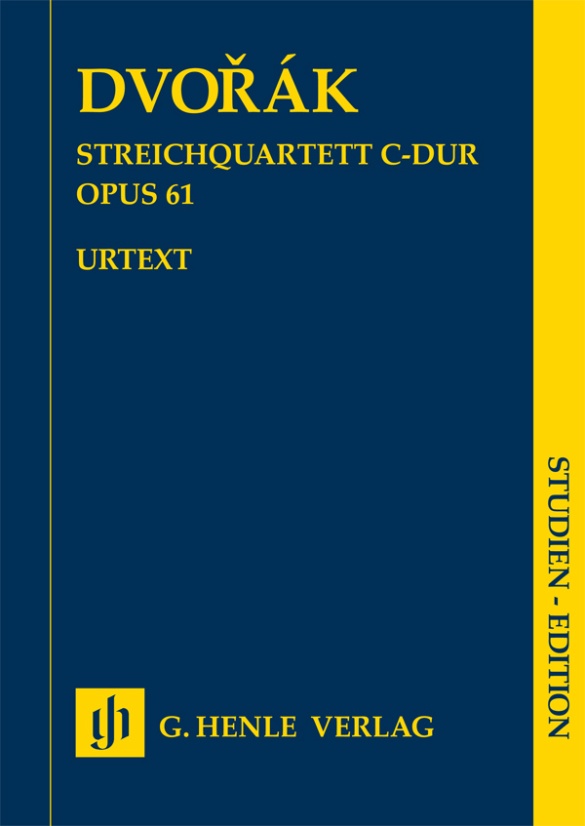

Antonín Dvorák
String Quartet C major op. 61
Composed in autumn of 1881, Opus 61 is the last of Dvořák’s “middle” quartets by chronology for which Beethoven and Schubert served as the most significant models. Beethoven’s influence, from thematic development to motivic treatment, is particularly noticeable in this work in C major. It is only in the finale that the typical Slavic tonal quality usually found in Dvořák’s music surfaces somewhat more prominently. Due to a lack of time, the composer - contrary to his usual practice - turned to older, either discarded or hitherto unpublished themes from other works for three of the four movements.
This reliable Urtext edition continues the comprehensive Henle series of significant works of chamber music by Dvořák.
Content/Details
About the Composer
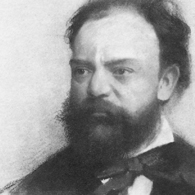
Antonín Dvorák
With Smetana he is the most famous Czech composer of the nineteenth century, contributing to the dissemination and appreciation of Czech music throughout the world. Among his around 200 works, encompassing all standard genres, are nine symphonies, fourteen string quartets, and twelve operas.
About the Authors

Peter Jost (Editor)
Dr. Peter Jost, born in 1960 in Diefflen/Saar, read musicology, German and comparative studies at Saarland University in Saarbrücken. He did his PhD in 1988 with a thesis on Robert Schumann’s Waldszenen.
From November 1991 to April 2009 he was a research associate at the Richard Wagner Complete Edition in Munich, and since May 2009 has been an editor at G. Henle Publishers. His Urtext editions comprise predominantly French music of the 19th and 20th centuries, including works by Lalo, Saint-Saëns and Ravel.
Product Safety Informations (GPSR)

G. Henle Verlag
Here you can find the information about the manufacturer of the product.G. Henle Verlag e.K.
Forstenrieder Allee 122
81476 München
Germany
info@henle.de
www.henle.com
recommendations
autogenerated_cross_selling
Further editions of this title
Further editions of this title


